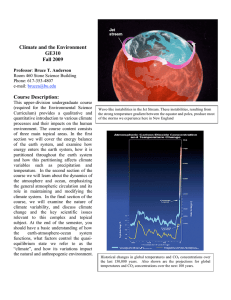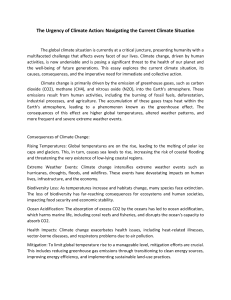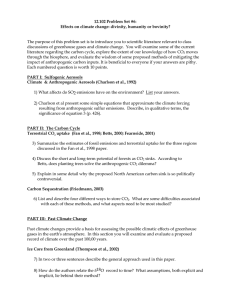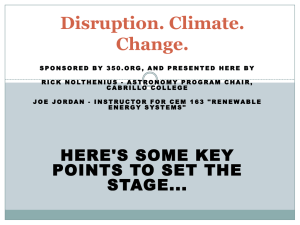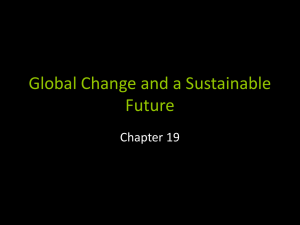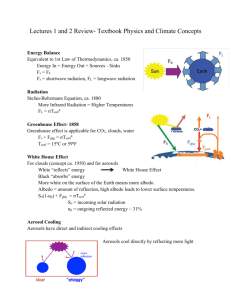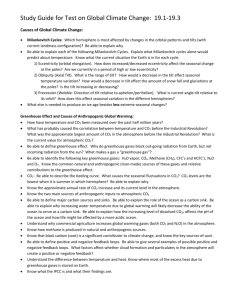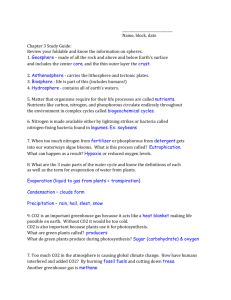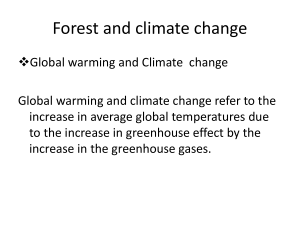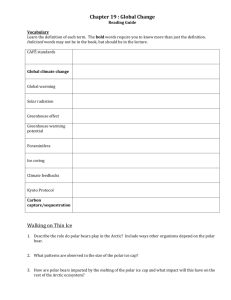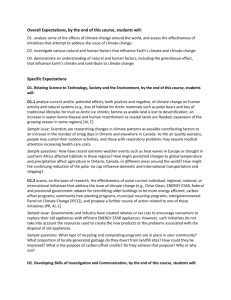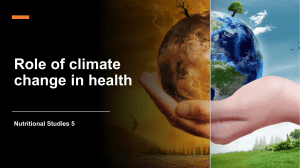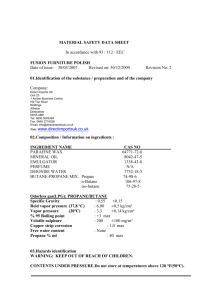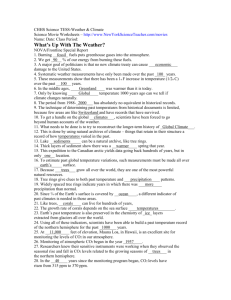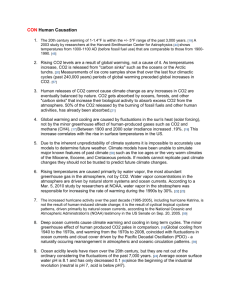Global Climate Change
advertisement
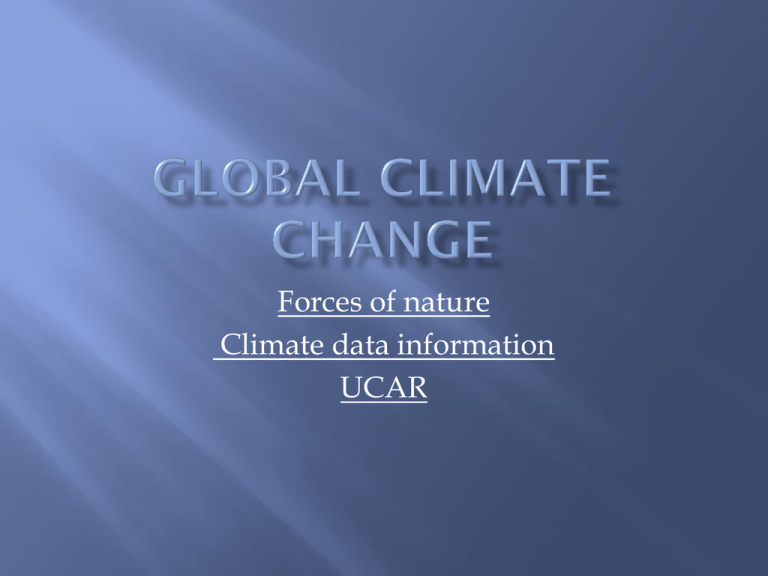
Forces of nature Climate data information UCAR External Forces Or Internal Forces Warming (Greenhouse effect) Cooling (Reflecting sunlight) Climate Change Global Warming 1. Natural 1. U.V. Radiation 2. Natural Cycles 1. Milankivitch 2. Solar spots 3. GHG 1. CO2, H2O, CH4, 03, N2O 2. Anthropogenic 1. Increase in GHG Proxy evidence: Early atmosphere :CH4, N2O, CO2 Increase in plants decreased CO2 levels planet cooled off Yet warm enough to have palm trees at the poles Vostok Ice core: Supports Milankovitch cycles, gradual change Also showed rapid change, why? GOCB Cold Salty water is more dense, Fresh water freezes faster, would stop GOCB, Entered ocean from melting ice Change in CO2 levels has not been explained, just correlation Past 150 years 19 of the 20 warmest years on record occurred since 1980 If fresh water is added to the marine water it becomes less dense and will not sink The combo water stalls the GOCB Places like Ireland will become much colder Milankovitch cycles Eccentricity : Earth gets closer and farther away from the sun on 100,000 year intervals 1895 Svante Arrhenius: predicted CO2 from coal combustion would increase global temps Keeling curve Global surface temperatures don’t match atmosphere increases POD: Cooling of Ocean temperatures Increased volcanic action Reduction in O3 A series of small volcanoes since 2000 that have spewed sunlight-blocking ash skyward The natural 11-year solar cycle, whose declining phase lasted longer than usual: from 2000 to 2009 Variations in the exchange of heat between the ocean and atmosphere Oceans have been absorbing energy POD event 10 yr cycle Since 2000 more volcanic activity Aerosols Sulfates Sun spots solar flares Less Energy from sun Urban heat islands cause _________ which can lead to______ Increased energy consumption: high peak demand and increased chance of blackouts or brownouts. Increased demand in energy; greater greenhouse gas emissions; higher temperatures. Increased demand in energy; greater emission in pollutants from power plants.; formation of ground-level ozone. Increased demand in energy , greater emission in pollutants from power plants; Compromised human health and comfort: Warmer days and nights, along with higher air pollution levels, can contribute to general discomfort, respiratory difficulties, heat cramps and exhaustion, non-fatal heat stroke, and heatrelated mortality. Hot pavement and rooftop surfaces; the transfer their excess heat to stormwater, which then drains into storm sewers and raises water temperatures as it is released into streams, rivers, ponds, and lakes. Rapid temperature changes can be stressful to aquatic ecosystems. Impaired water quality: Planetary Albedo 1. Natural a. Volcanoes b. Snow/Ice c. Clouds 2. Anthropogenic a. Aerosols i. dust ii. soot POSITIVE FEEDBACK LOOP GOCB will stall and lower global temperature Sea levels will rise and flood coastal areas Climates change Arctic: permafrost is melting buildings and infrastructures are changing Local cultures face extinction Seasons lengths will change Summers longer increase in insect populations that carry disease Cause a change in migration patterns, Change in growing patterns, animals will migrate farter north Increase of temperature 2.5-10°F by 2100 (IPCC) Less snowpack in western U.S. Increase in rain fed crop yield 5-20%, More frequent and intense heat waves in cites that currently have them Reduced energy use: Reduced air pollution and greenhouse gas emissions: Improved human health and comfort: Enhanced stormwater management and water quality: Improved quality of life: Kyoto protocol Cap and Trade Voluntary limits
